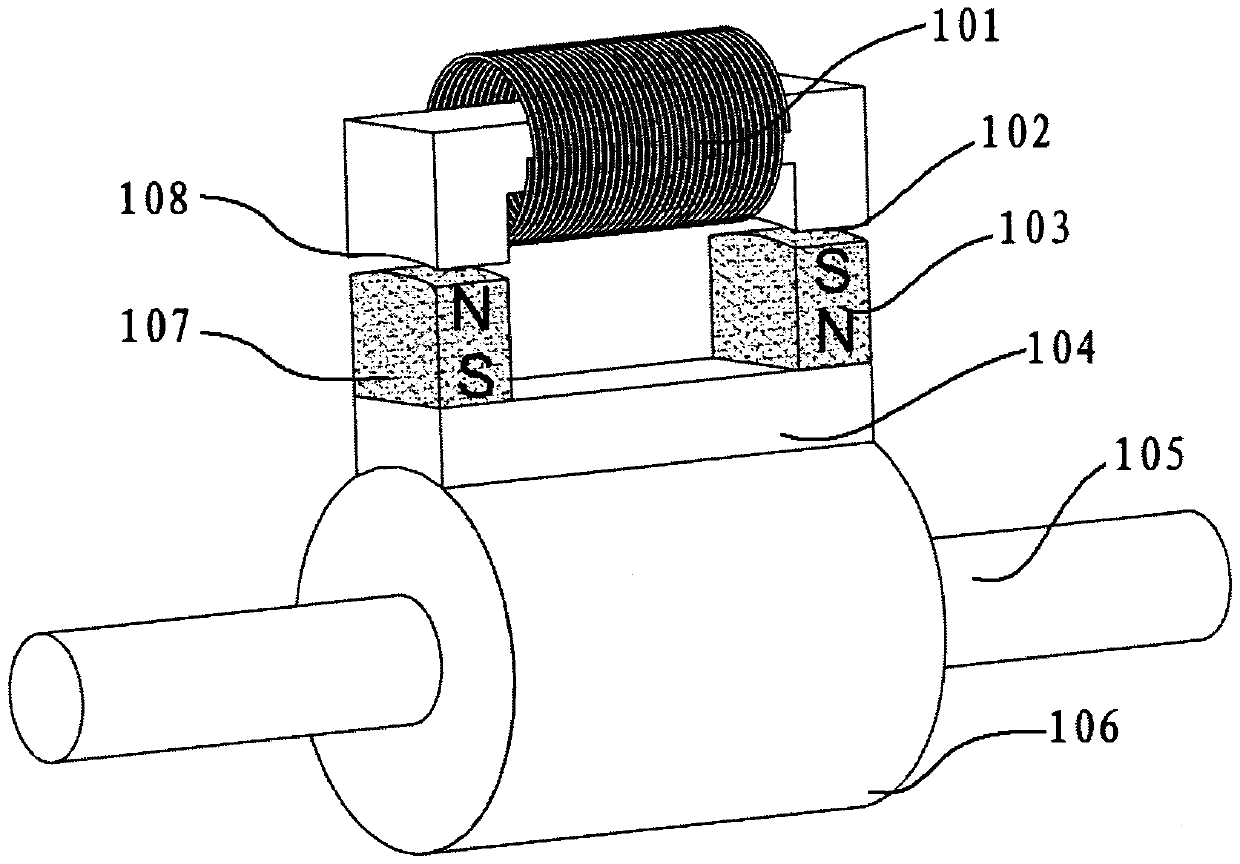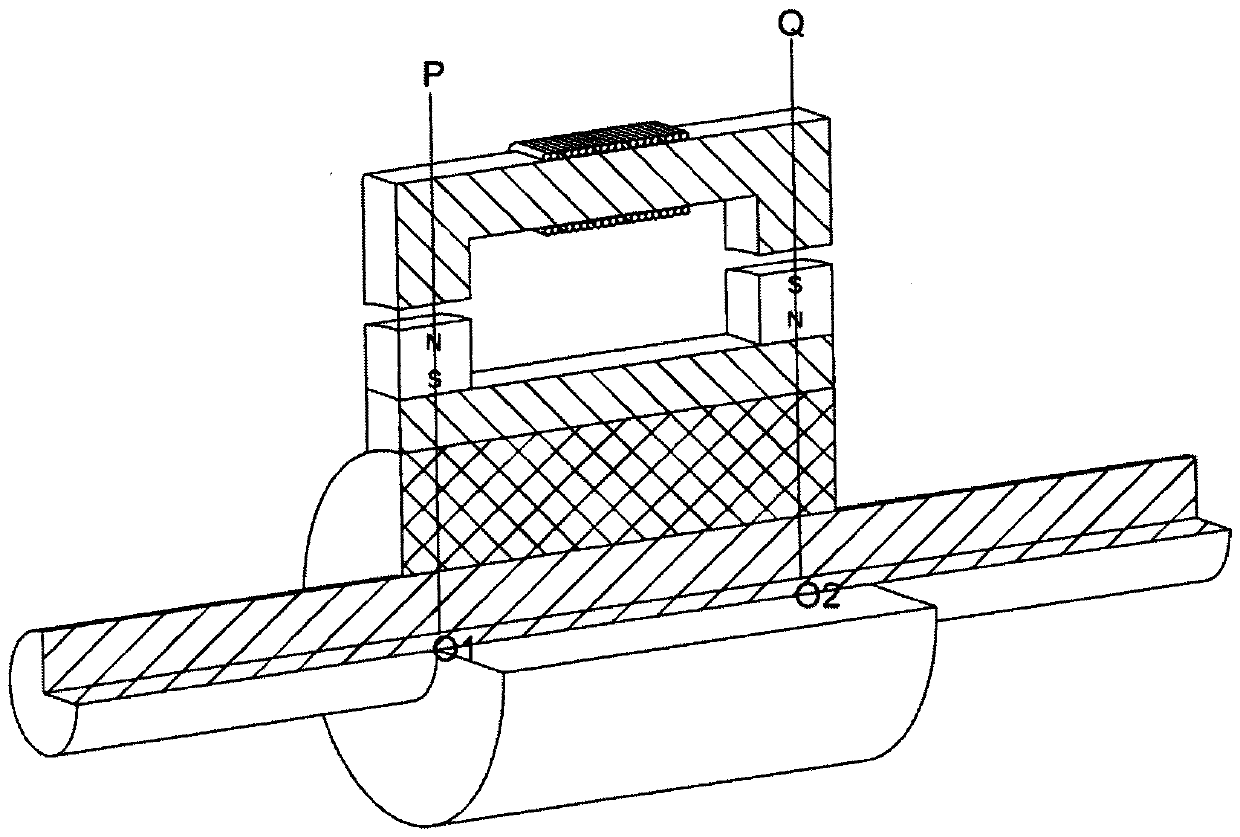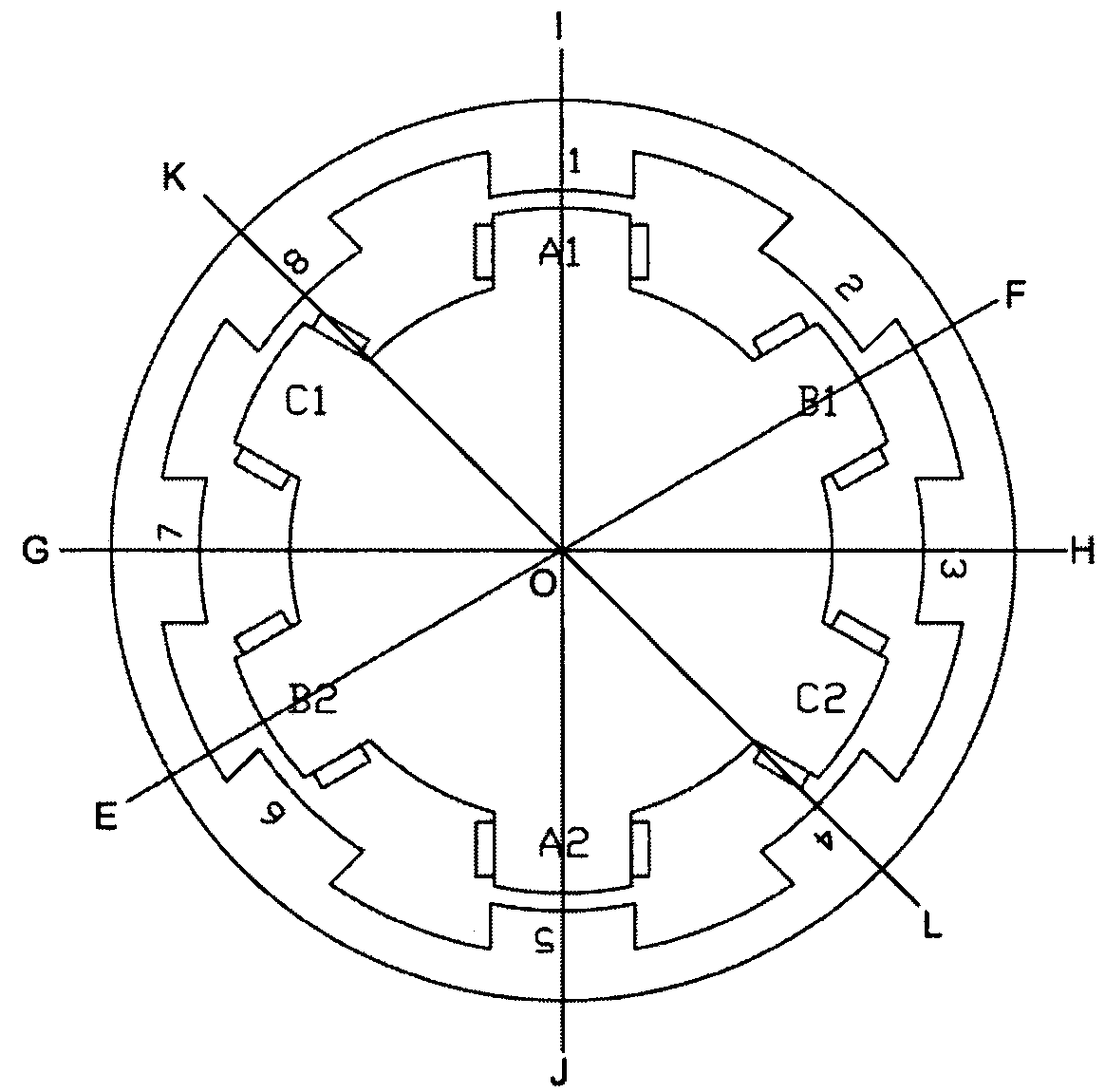A Switched Reluctance Motor with Power Loss Self-locking Function
A technology of switched reluctance and electric motors, applied in the direction of magnetic circuit rotating parts, electrical components, electromechanical devices, etc., can solve the problems of potential safety hazards, consumption of friction materials, waste of electric energy, etc.
- Summary
- Abstract
- Description
- Claims
- Application Information
AI Technical Summary
Problems solved by technology
Method used
Image
Examples
Embodiment 1
[0061] This embodiment is an outer rotor motor, and its specific structure is as attached Figure 4 attached Figure 5 And attached Figure 6 As shown, the number of "permanent magnet salient pole pairs" of the rotor in this embodiment is twice the number of "excitation salient pole pairs" of the stator, that is, M=2N, where M is twelve, N is six, and k is 2. An example is to solve the motor starting by biasing the two sets of rotor "permanent magnet salient pole pairs" structure.
[0062] Figure 4 It is a cross-sectional view of the structure of Embodiment 1. (For the convenience of explanation, the equilibrium state generated by the α angle is ignored, and the figure is the actual state for analysis). The stator is composed of a stator seat 206 and six "excitation salient pole pairs", and six "excitation pole pairs" The “salient pole pairs” take the rotation axis 208 as the axis of symmetry, and are arranged radially symmetrically on the periphery of the stator seat 206,...
Embodiment 2
[0068] The structure of this embodiment is as attached Figure 7-9 shown. The structure of this embodiment is basically the same as that of Embodiment 1, the only difference lies in the winding method and setting position of the excitation coils of the stator "excitation salient pole pairs". In this embodiment, the excitation coils are divided into two groups and wound in series on the salient poles of the iron core, so that the axial length of the motor can be shortened to meet special needs.
[0069] The asymmetric arrangement of the "permanent magnet salient pole pairs" of the rotor in this embodiment, the self-locking mechanism when the motor is powered off, the motor start-up, the operation process, and the automatic air cooling of the motor are the same as those in the first embodiment, and will not be repeated here.
Embodiment 3
[0071] This embodiment is an external rotor motor, the number M of rotor "salient pole pairs" is twice the number N of stator "salient pole pairs", that is, M is 10, N is 5, and k is 2.
[0072] In this embodiment, a structural form of biasing a stator excitation salient pole pair can be adopted to solve the problem of starting the motor. Figure 10 The structural section of this kind of bias mode motor. In the figure, the relative position of the stator and the rotor is an initial state when the motor is de-energized, that is, the self-locking state, and the four excitation salient pole pairs A, C, D, E are respectively facing the permanent magnet salient pole pair I on the rotor. , Ⅴ, Ⅶ, Ⅸ, and there is an offset α-degree central angle between the salient pole radial centerline of stator excitation salient pole pair B and the salient pole radial centerline of rotor permanent magnet salient pole pair Ⅲ. Another initial state in the case of power failure of the motor in this ...
PUM
 Login to View More
Login to View More Abstract
Description
Claims
Application Information
 Login to View More
Login to View More - R&D
- Intellectual Property
- Life Sciences
- Materials
- Tech Scout
- Unparalleled Data Quality
- Higher Quality Content
- 60% Fewer Hallucinations
Browse by: Latest US Patents, China's latest patents, Technical Efficacy Thesaurus, Application Domain, Technology Topic, Popular Technical Reports.
© 2025 PatSnap. All rights reserved.Legal|Privacy policy|Modern Slavery Act Transparency Statement|Sitemap|About US| Contact US: help@patsnap.com



